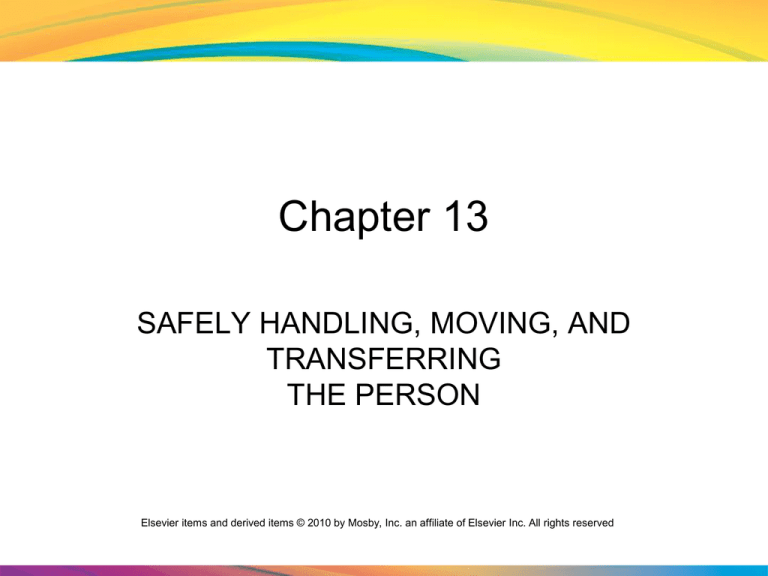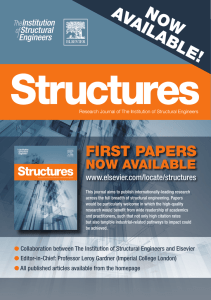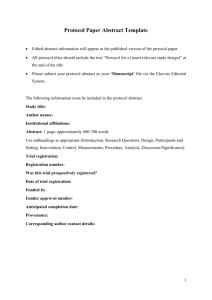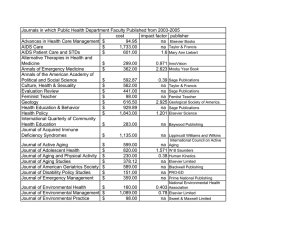
Chapter 13
SAFELY HANDLING, MOVING, AND
TRANSFERRING
THE PERSON
Elsevier items and derived items © 2010 by Mosby, Inc. an affiliate of Elsevier Inc. All rights reserved
• To protect yourself and the person from
injury, you must use your body correctly
when:
– Turning and repositioning persons
– Moving persons in bed
– Transferring persons to and from beds, chairs,
wheelchairs, stretchers, and toilets
• To transfer a person means moving the
person from one place to another.
Elsevier items and derived items © 2010 by Mosby, Inc. an affiliate of Elsevier Inc. All rights reserved
2
PREVENTING WORKRELATED INJURIES
• The Occupational Safety and Health Administration
(OSHA) recommends that:
– Manual lifting be minimized in all cases
– Manual lifting be eliminated when possible
• To safely handle, move, and transfer the person,
the nurse and health team determine:
– The person’s dependence level
– The amount of assistance and how many staff members
are needed
– What procedure to use
– The equipment needed
Elsevier items and derived items © 2010 by Mosby, Inc. an affiliate of Elsevier Inc. All rights reserved
3
PROTECTING THE SKIN
• Protect the person’s skin during handling,
moving, and transfer procedures.
• Friction is the rubbing of one surface against
another.
• Shearing is when the skin sticks to a surface
while muscles slide in the direction the body
is moving.
Elsevier items and derived items © 2010 by Mosby, Inc. an affiliate of Elsevier Inc. All rights reserved
4
• To reduce friction and shearing:
– Roll the person.
– Use friction-reducing devices.
•
•
•
•
•
•
A lift sheet (turning sheet)
A cotton drawsheet
Turning pads
Large incontinence products
Slide boards
Slide sheets
Elsevier items and derived items © 2010 by Mosby, Inc. an affiliate of Elsevier Inc. All rights reserved
5
MOVING PERSONS IN BED
• OSHA recommends the following:
– For a dependence level of Code 4: Total Dependence
• A mechanical lift or friction-reducing device and at least 2
staff members
– For a dependence level of Code 3: Extensive Assistance
• A mechanical lift or friction-reducing device and at least 2
staff members
– If the person weighs less than 200 pounds
• 2 to 3 staff members and a friction-reducing device
– If the person weighs more than 200 pounds
• At least 3 staff members and a friction-reducing device
Elsevier items and derived items © 2010 by Mosby, Inc. an affiliate of Elsevier Inc. All rights reserved
6
• Moving the person up in bed
– You can sometimes move lightweight adults up
in bed alone:
• If they assist
• If they use a trapeze
– It is best to have help and to use an assist
device.
– Two or more staff members are needed to move
the following persons up in bed:
• Heavy persons
• Weak persons
• Very old persons
Elsevier items and derived items © 2010 by Mosby, Inc. an affiliate of Elsevier Inc. All rights reserved
7
• Assist devices are used to move some persons up
in bed.
– With assist devices:
• The person is moved more evenly.
• Shearing and friction are reduced.
– The device is placed under the person from the head to
above the knees or lower.
– At least two staff members are needed.
– This procedure is used:
• For most patients and residents
• Following OSHA recommendations
• For persons recovering from spinal cord surgery or spinal
cord injuries
• For older persons
Elsevier items and derived items © 2010 by Mosby, Inc. an affiliate of Elsevier Inc. All rights reserved
8
• Moving the person to the side of the bed
– The person is moved to the side of the bed:
• For repositioning and care procedures
• Before turning
• To limit your need to reach
– One method involves moving the person in segments.
– Use a mechanical lift or the assist device method:
•
•
•
•
Following OSHA recommendations
For older persons
For persons with arthritis
For persons recovering from spinal cord injuries or spinal
cord surgery
Elsevier items and derived items © 2010 by Mosby, Inc. an affiliate of Elsevier Inc. All rights reserved
9
– Use an assist device as directed by the nurse
and care plan.
– An assist device helps prevent:
• Pain and skin damage
• Injury to the bones, joints, and spinal cord
Elsevier items and derived items © 2010 by Mosby, Inc. an affiliate of Elsevier Inc. All rights reserved
10
TURNING PERSONS
• Turning persons onto their sides is needed:
– To help prevent complications from bedrest
– For certain procedures and care measures
• To turn persons with arthritis in their spines,
hips, and knees, logrolling is preferred.
Elsevier items and derived items © 2010 by Mosby, Inc. an affiliate of Elsevier Inc. All rights reserved
11
• Logrolling is turning the person as a unit, in
alignment, with one motion.
– The spine is kept straight.
– The procedure is used to turn:
•
•
•
•
Older persons with arthritic spines or knees
Persons recovering from hip fractures
Persons with spinal cord injuries
Persons recovering from spinal surgery
Elsevier items and derived items © 2010 by Mosby, Inc. an affiliate of Elsevier Inc. All rights reserved
12
SITTING ON THE SIDE OF
THE BED (DANGLING)
• Patients and residents dangle for many reasons.
– Some become dizzy or faint when getting out of bed too
fast.
– Some persons increase activity in stages.
– Surgical patients sit on the side of the bed some time after
surgery.
• While dangling the legs, the person:
– Coughs and deep breathes
– Moves the legs back and forth in circles
• If dizziness or fainting occurs, lay the person down.
Elsevier items and derived items © 2010 by Mosby, Inc. an affiliate of Elsevier Inc. All rights reserved
13
TRANSFERRING PERSONS
• Patients and residents are moved to and from:
– Beds
– Chairs, wheelchairs, and shower chairs
– Commodes and toilets
• The amount of help needed and the method used
vary with the person’s dependency level.
• For a safe transfer:
– Arrange the room so there is enough space.
– Place the chair, wheelchair, or other device correctly.
Elsevier items and derived items © 2010 by Mosby, Inc. an affiliate of Elsevier Inc. All rights reserved
14
• Transfer belts
– Transfer belts (gait belts) are used to:
• Support patients and residents during transfers
• Reposition persons in chairs and wheelchairs
• Bed to chair or wheelchair transfers
– Help the person out of bed on his or her strong
side.
– Stand and pivot transfers are used if:
• The person’s legs are strong enough to bear some or
all of his or her weight
• The person is cooperative and can follow directions
• The person can assist with the transfer
Elsevier items and derived items © 2010 by Mosby, Inc. an affiliate of Elsevier Inc. All rights reserved
15
• Chair or wheelchair to bed transfers
– Chair or wheelchair to bed transfers have the
same rules as bed to chair transfers.
• If the person is weak on one side:
– Transfer the person so the strong side moves first.
– The chair or wheelchair is positioned so the person’s
strong side is near the bed.
Elsevier items and derived items © 2010 by Mosby, Inc. an affiliate of Elsevier Inc. All rights reserved
16
• Mechanical lifts
– Mechanical lifts are used to transfer persons who:
• Cannot help themselves
• Are too heavy for the staff to transfer
– Before using a lift:
• You must be trained in its use.
• It must work.
• The sling, straps, hooks, and chains must be in good repair.
– The type of sling used depends on the person’s size, condition,
and other needs.
• The person’s weight must not exceed the lift’s capacity.
• At least two staff members are needed.
– Follow the manufacturer’s instructions.
Elsevier items and derived items © 2010 by Mosby, Inc. an affiliate of Elsevier Inc. All rights reserved
17
• Transferring the person to and from the
toilet
– Getting to the toilet is hard for persons who use
wheelchairs.
• Falls and work-related injuries are risks.
– Sometimes mechanical lifts are used for a
transfer to and from a toilet.
Elsevier items and derived items © 2010 by Mosby, Inc. an affiliate of Elsevier Inc. All rights reserved
18
REPOSITIONING IN A CHAIR
OR WHEELCHAIR
• Some persons can help with repositioning.
– If the person cannot help, a mechanical lift is
used.
• Follow the nurse’s directions and the care
plan for the best way to reposition a person
in a chair or wheelchair.
– Do not pull the person from behind the chair or
wheelchair.
Elsevier items and derived items © 2010 by Mosby, Inc. an affiliate of Elsevier Inc. All rights reserved
19




